Noise complaints around the Sheffield Wind facility in Vermont began soon after the turbines began turning; combined with complaints from other wind farms, the Vermont Department of Public Service initiated investigations. This week, a report was released summarizing the results from three days of noise monitoring outside the home of a family that has been especially affected by turbine noise. Unfortunately, the conditions on these days were not similar to those that cause the residents problems; and more generally, on none of the three days were investigators able to document the turbine sound levels (on one day there was virtually no wind and they weren’t operating; on the other two, wind was too strong to hear turbines, and not from a direction that brings turbine noise to the house).
As reported on VtDigger:
Chris Recchia, commissioner for the Vermont Public Service Department, said that while the noise testing may help his department better understand how to evaluate wind noise in the future, he cannot draw conclusions from it. “The testing is not helpful in terms of determining wind noise,” he said. “It really is not particularly useful in making conclusions about the compliance of the turbines.”
“This was our first attempt at trying to do independent noise testing, but it brings up more issues than it probably answers,” he said. “One of them is having a standard inside someone’s house.”
The acousticians on site found daylong average noise levels of 30dBA on the relatively windless day, and 45dBA and 47dBA on the windy days; at no time were the turbines audible through the wind, leading the investigators to conclude that the turbines’ contributions to these levels were lower than the state limit of 45dBA. The inability to isolate turbine noise in their monitoring left them unable to predict the inside noise level, which by state regs should remain below 30dB; they had assumed they could capture outside turbine noise, so had not arranged to make recordings in the house itself. However, as the report says:
…it should be noted that in conversations with the Therriens, the three-day measurement period was not representative of the worst-case noise conditions that they experience. They are most impacted by the wind turbine noise when the winds are from the east and the south, and their residence is directly downwind of the wind turbines. If measurements are to be made that demonstrate these worst-case noise conditions, it may be necessary to greatly extend the time of measurement period to catch the particular operating and atmospheric conditions that cause the level of annoyance claimed by the Therriens.
UPDATE, 7/15/13: The Therriens and Vermonters for a Clean Environment have raised questions about the reported power output on one of the two windy nights. According to a letter filed with the PSB, conditions were actually similar to previous high-noise periods on one of the testing nights, but the power output charts in the noise monitoring report show surprisingly low power output during some high wind times in the wee hours of the 2nd day of testing. Luann Therrien noted, “Up now at 2am. Imagine our surprise we are not being rocked out of the house by turbine whoosh and jet sound. First time in a long time that we are hearing mostly normal wind sounds (during a time when the wind speed and direction were optimal for loud turbine noise).” It’s possible that the wind project was under some curtailment from local grid operators who didn’t need the power at that time; VCE wonders whether the wind farm operator knowingly feathered the blades to reduce sound during the testing, though a spokeman for First Wind said, “Of course, we don’t make any adjustments when testing is going on.” For more, see the VCE letter to the PSB.
Some larger issues are also spotlighted by this study. Charts included in the report offer a clear representation of the variability in wind noise over the course of the day—the daylong average levels, especially on the windy days, were far exceeded for much of the day. While in this case, the noise was wind, similar variability is commonly also found in wind turbine sound (often 5-10dB above a daylong average, and at times 15-20dB higher, though generally with lower peaks than this blustery day produced); daylong average figures, while useful in many ways, rarely reflect the actual noise experience of neighbors.
The difficulties encountered in this study highlight the need for noise monitoring—especially at homes with repeated complaints—to be planned with enough flexibility to be on site on days when weather forecasts predict the conditions that residents have stated to be the most troublesome, and to be sure turbines are operating at full power at times when conditions are ripe for issues. As noted in the comment section of the VtDigger piece (which features a lively, respectful discussion), those who are upset about turbine noise rarely say the turbines are always a problem; rather, there are often certain conditions that are significantly worse. To thus spend limited resources doing sound studies at randomly chosen times is likely to be of little practical use. The more troublesome conditions may occur more, or less, commonly in different locations, and may easily be missed by any brief monitoring period, unless spot monitoring is carefully and flexibly planned.
It should be stressed that even if the difficult conditions occur a relatively small proportion of hours per month, they can still create a chronic, hard to live with experience. For example, one study suggested peak turbine noise levels may occur as little as 4% of the hours in a year; but, doing the math on 4% of the time shows that this could mean 116 days—a third of the year—with peak sound for three hours a day, or 58 days—nearly two months worth of days—with peak sound for 6 hours; for more on this, and turbine sound variability in general, see this recent AEI presentation. (Note that this analysis is looking only at generalized yearly variability in wind-speed-driven turbine sound levels and some propagation factors, and does not incorporate any turbulence-induced increases in turbine sound levels; thus the 4% number is illustrative only, and not meant to represent actual rates of troublesome noise at any particular location. Few studies have looked at the effects of air turbulence or turbine wakes on turbine source levels, and none that I know of have actually tracked long-term patterns of sound variability around wind farms.)
RELATED, 7/23/13: More extended noise monitoring at another Vermont wind farm on Lowell Mountain has found no violations of the 45dB limit, including at times when turbines were operating at full capacity. Turbines were monitored continuously for two weeks in May and June, according to a local news report on the testing. Two earlier monitoring periods found a total of four hours in which turbines exceeded the noise limits; Green Mountain Power says this was due to snow build-up, and new equipment will allow them to shut down turbines if that happens again; a hearing in early August will determine whether Green Mountain Power will be penalized for the violations.

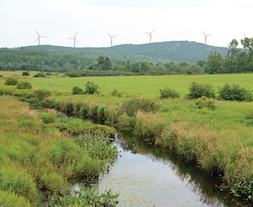

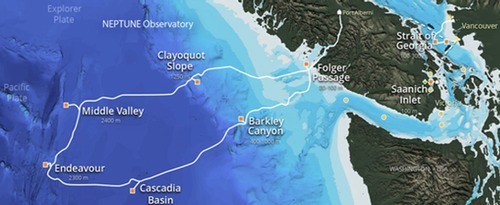
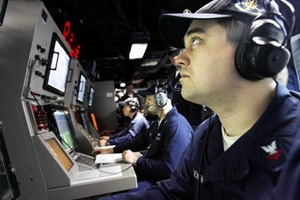 But while scientists are keen to hear what the new undersea recordings have to tell us, the US and Canadian Navies are far less enthusiastic. They’re concerned that the audio feeds, which are freely available to scientists and the public as downloads and via live online feeds, will reveal sensitive information about submarine and ship movements, navy training activities, and even the sound signatures of individual vessels. The two navies have arranged with researchers to have an audio bypass switch that allows them to divert the audio streams into a secured military computer—sitting in a locked cage at the research facility where the data comes ashore—at times when their ships are nearby (and also at some random other times, so that their diversions don’t give away any secrets on their own!).
But while scientists are keen to hear what the new undersea recordings have to tell us, the US and Canadian Navies are far less enthusiastic. They’re concerned that the audio feeds, which are freely available to scientists and the public as downloads and via live online feeds, will reveal sensitive information about submarine and ship movements, navy training activities, and even the sound signatures of individual vessels. The two navies have arranged with researchers to have an audio bypass switch that allows them to divert the audio streams into a secured military computer—sitting in a locked cage at the research facility where the data comes ashore—at times when their ships are nearby (and also at some random other times, so that their diversions don’t give away any secrets on their own!). 
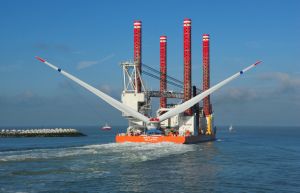 With all this in mind, Dominion Virginia Power’s first commitments to the Virginia Offshore Wind Development Authority
With all this in mind, Dominion Virginia Power’s first commitments to the Virginia Offshore Wind Development Authority  “Even with these restrictions placed on several recently constructed facilities, the board has received complaints regarding sounds produced by the operation of some facilities. These complaints have raised questions about whether the limitations that the board has previously adopted are adequate,” the PSB
“Even with these restrictions placed on several recently constructed facilities, the board has received complaints regarding sounds produced by the operation of some facilities. These complaints have raised questions about whether the limitations that the board has previously adopted are adequate,” the PSB 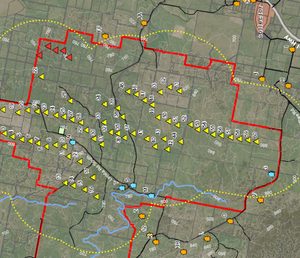 Meanwhile, the 63-turbine Collector Wind Farm has been received a
Meanwhile, the 63-turbine Collector Wind Farm has been received a 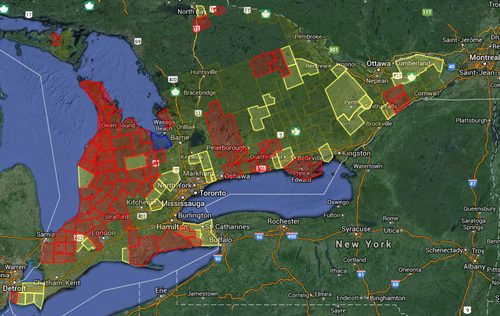
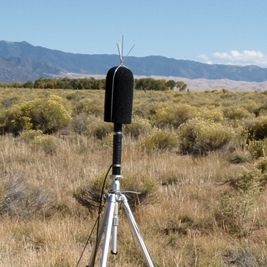 For over a decade, the National Park Service has been on the
For over a decade, the National Park Service has been on the 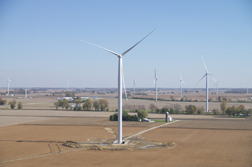 In addition, juwi is making provocative claims that BZA chair Jerry Acres is no longer capable of making an unbiased decision, thanks to comments he’s made suggesting regrets about his support of the Wildcat Wind Farm (left), which began operating early this year and has
In addition, juwi is making provocative claims that BZA chair Jerry Acres is no longer capable of making an unbiased decision, thanks to comments he’s made suggesting regrets about his support of the Wildcat Wind Farm (left), which began operating early this year and has 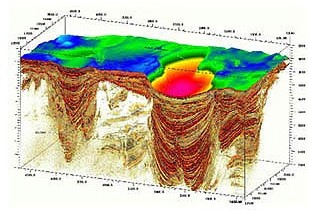 And, the Bureau of Ocean Energy and Management will develop new standards to assure that airgun surveys are not unnecessarily duplicative. Dozens of surveys take place every year in the Gulf, with repeat surveys sometimes needed to assess reservoir depletion, and as new and improved imaging capabilities are developed; often, survey results are considered proprietary, especially prior to bidding on leases.
And, the Bureau of Ocean Energy and Management will develop new standards to assure that airgun surveys are not unnecessarily duplicative. Dozens of surveys take place every year in the Gulf, with repeat surveys sometimes needed to assess reservoir depletion, and as new and improved imaging capabilities are developed; often, survey results are considered proprietary, especially prior to bidding on leases.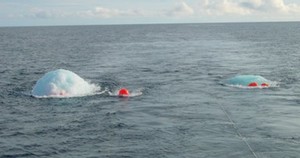 “Today’s agreement is a landmark for marine mammal protection in the Gulf,” said Michael Jasny, director of NRDC’s Marine Mammal Protection Project. “For years this problem has languished, even as the threat posed by the industry’s widespread, disruptive activity has become clearer and clearer.”
“Today’s agreement is a landmark for marine mammal protection in the Gulf,” said Michael Jasny, director of NRDC’s Marine Mammal Protection Project. “For years this problem has languished, even as the threat posed by the industry’s widespread, disruptive activity has become clearer and clearer.” In the first town-wide vote on the question of what to do about noise issues around two town-owned turbines, Falmouth voters overwhelmingly defeated a measure that would have authorized the Selectmen to continue on their preferred path of dismantling the turbines. The proposal carried a likely pricetag of about $800 per household, spread over ten years, largely to pay back loans and renewable energy credits that the town received in advance in order to buy and install the turbines. The measure fell by a 2-1 margin, with about 40% of the town’s registered voters turning out.
In the first town-wide vote on the question of what to do about noise issues around two town-owned turbines, Falmouth voters overwhelmingly defeated a measure that would have authorized the Selectmen to continue on their preferred path of dismantling the turbines. The proposal carried a likely pricetag of about $800 per household, spread over ten years, largely to pay back loans and renewable energy credits that the town received in advance in order to buy and install the turbines. The measure fell by a 2-1 margin, with about 40% of the town’s registered voters turning out.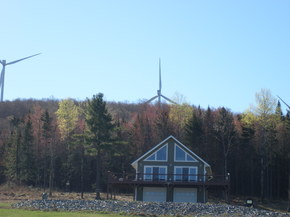 Since last fall, 105 formal complaints have been filed, by 23 different individuals living near the Sheffield, Lowell, or Georgia Mountain wind projects. Annette Smith of Vermonters for a Clean Environment is also collecting confidential complaints, some from people who have filed formal complaints, and some from neighbors who have felt it to be futile to complain to the turbine operators and/or state.
Since last fall, 105 formal complaints have been filed, by 23 different individuals living near the Sheffield, Lowell, or Georgia Mountain wind projects. Annette Smith of Vermonters for a Clean Environment is also collecting confidential complaints, some from people who have filed formal complaints, and some from neighbors who have felt it to be futile to complain to the turbine operators and/or state. 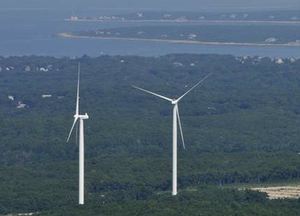 The two town-owned turbines had been projected to create a net revenue of several hundred thousand dollars a year, in electricity saved at the town Wastewater Treatment Plant, electricity sold on the open market, and Renewable Energy Credits. However, for the past year, since state DEP noise monitoring found noise levels exceeding state limits in the nearby neighborhood at night, the turbines have been shut down at night, and so operating at a deficit of about $100,000 a year due to the significantly diminished output. This
The two town-owned turbines had been projected to create a net revenue of several hundred thousand dollars a year, in electricity saved at the town Wastewater Treatment Plant, electricity sold on the open market, and Renewable Energy Credits. However, for the past year, since state DEP noise monitoring found noise levels exceeding state limits in the nearby neighborhood at night, the turbines have been shut down at night, and so operating at a deficit of about $100,000 a year due to the significantly diminished output. This 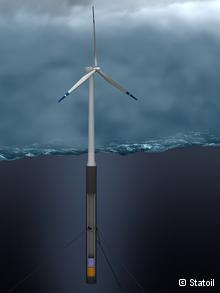 Watching the decade-long struggle in Massachusetts to build Cape Wind, the nation’s first offshore wind farm, researchers and state officials in Maine have chosen a different path: they decided to tackle the engineering challenges of building turbines that can float in deep water far offshore, rather than the social challenges of building wind farms in shallow water close to shore (which use fundamentally the same foundation designs as onshore turbines). Floating deepwater turbines can take advantage of even stronger, more consistent winds than their nearshore counterparts; along most of the east coast, offshore wind is far more reliable than onshore locations.
Watching the decade-long struggle in Massachusetts to build Cape Wind, the nation’s first offshore wind farm, researchers and state officials in Maine have chosen a different path: they decided to tackle the engineering challenges of building turbines that can float in deep water far offshore, rather than the social challenges of building wind farms in shallow water close to shore (which use fundamentally the same foundation designs as onshore turbines). Floating deepwater turbines can take advantage of even stronger, more consistent winds than their nearshore counterparts; along most of the east coast, offshore wind is far more reliable than onshore locations.